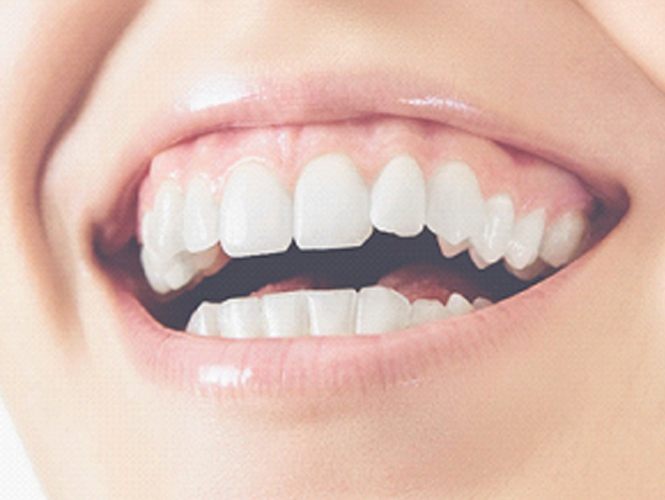What is clinical crown lengthening?
Clinical crown lengthening is a procedure where the tooth is lengthened to expose more of the tooth structure. This procedure may be done for aesthetic purposes, though it is most commonly done to allow additional tooth structure to be exposed to place a crown later.
What conditions would cause a dentist to recommend clinical crown lengthening?
Clinical crown lengthening can be recommended any time a dentist needs more room on the tooth to place a crown. This can occur when a tooth is cracked, there's a cavity on the tooth, or any other situation where more tooth structure is needed.
What are the advantages of saving a tooth with clinical crown lengthening?
Clinical crown lengthening is an important procedure as it helps save a tooth. There are options to replace a missing tooth, like a dental implant, but none of these options are as good as the natural tooth. So, the goal of clinical crown lengthening is to save the tooth.
What is the process I will go through if I decide to go through with clinical crown lengthening?
Clinical crown lengthening is a minimally invasive procedure. It involves a dental surgery done with regular anesthetic numbing, similar to any other major dental procedure. The gums are opened up in the area to expose the tooth structure, any necessary areas are smoothed, and then the area is closed to allow it to heal before any other work is done by the dentist.
How long does it take to recover from clinical crown lengthening?
Recovery from clinical crown lengthening is relatively minor. Many patients report minimal discomfort which can be managed with pain medication. Sutures are usually removed two weeks after the procedure. It's important to give the gum tissue time to settle before the dentist does any additional work such as a crown or a filling near the area.
How long do the results from clinical crown lengthening last?
Once clinical crown lengthening is done, it is a completed result. There's no likely need to repeat the procedure. However, crown lengthening may need to be performed on a different area at a different time.
Can a tooth get a cavity after clinical crown lengthening?
Yes, a tooth can get a cavity after clinical crown lengthening. Any tooth that has a filling or a crown still has part of the remaining tooth structure exposed. Therefore, it is vital for patients to come in for regular maintenance visits as cavities can recur around the results from the procedure.
What are the financing options involved with clinical crown lengthening?
Clinical crown lengthening does carry a cost. Many patients have dental insurance, and often, this procedure is a covered benefit. However, it's essential to verify benefits to see the type of coverage available for this particular procedure. Besides insurance, we have third-party financing options available to spread payments out over a period of time.
How can I schedule an appointment to talk to a dentist about crown lengthening?
If you're ready to discuss clinical crown lengthening, please call us at (850) 692-9200. We can set up an exam for you with or without a referral. We look forward to meeting you soon.
The Answer for a Gummy Smile
The next time you’re in front of a mirror, take the time to look at your grin; what exactly do you see when you pull your lips back? If there’s more soft tissue showing than teeth, the result can be an awkward looking “gummy” smile. By removing some of the unneeded gum tissue, Dr. Rasmussen can give your teeth a longer, more attractive appearance. If you think your gums might be drawing unwanted attention, call us to schedule a consultation today.
Why Choose Periodontics & Implant Dentistry of Tallahassee for Crown Lengthening?
- Get Rid of Your Gummy Smile
- Prepare the Tooth for a Crown or Another Restoration
- Procedure Performed by Board-Certified Periodontist

Who Is a Good Candidate for Crown Lengthening?
As with any procedure, we’ll need to examine your teeth and gums beforehand to make sure you’re eligible for crown lengthening. While it’s normally performed to treat a gummy smile, it might also be recommended if you need a dental crown; sometimes gum tissue will be removed to make room for such a restoration.
You need to be in good overall health before the crown lengthening process. That means you might have to wait to have the procedure performed if you’re currently suffering from gum disease or a condition that might make any sort of oral surgery risky.
How Crown Lengthening Works
Your gums will be numbed, and an appropriate sedative will be used depending on the situation. Dr. Rasmussen will make a number of incisions in your gums in order to remove them from the teeth. This will expose the roots as well as the bone underneath. Once all of the necessary tissue has been removed, the site will be sutured back together. The exact length of the procedure depends largely on the number of teeth that need to be treated. Also, you may need someone else to drive you to and from our office if sedation is used.
Benefits of Crown Lengthening
Enhanced Appearance: While you might not normally think of the role that the gums play in the appearance of your smile, you may be surprised at how much of a difference crown lengthening can make simply by exposing more of your dazzling teeth.
Improved Oral Health: If there’s too much gum tissue around your teeth, there’s a chance a cavity could develop where your toothbrush can’t reach. Crown lengthening will make it much easier to keep the entire tooth clean.
Permanent Results: Unlike other cosmetic treatments, there’s no need for touch-ups or additional procedures later down the road.

What to Expect After Crown Lengthening?
You should avoid strenuous exercise for the next three days after the procedure. Some discomfort is to be expected, and you can control it with pain medications such as ibuprofen. Apply an ice bag to your face for about 20 minutes at a time to reduce any swelling. If you start bleeding excessively and can’t control it, call our office right away.
Crown Lengthening FAQs
Crown lengthening can a great way to enhance your appearance or improve your overall oral health, but you should only agree to procedures that you feel you fully understand. It’s important to ask your periodontist anything that might be on your mind when considering a crown lengthening treatment. Below are a few common examples of questions that we’ve received form our patients; if there’s anything else you want to know regarding this procedure, don’t hesitate to call us!
What are the Possible Risks and Side Effects of Crown Lengthening?
As with any surgery, there is a risk of an infection occurring after crown lengthening if you don’t take the proper steps to keep your mouth clean during the recovery process. Other than that, though, there are very few risks involved. Possible side effects may include increased sensitivity to hot and cold foods and beverages due to the fact that the roots of your teeth have now been exposed. This is only temporary, however; the sensitivity should eventually go away after the gums have healed over. You should call our office immediately if you notice unusual side effects, such as discomfort that a pain reliever can’t help or bleeding that lasts longer than 24 hours after surgery.
What Steps are Taken to Prepare for a Crown Lengthening?
We’ll take X-rays of your mouth and review your medical history to account for any potential complications that we should be aware of. Please let us know about any medications that you’re taking at the moment; we’ll let you know if you need to discontinue usage for the time being. In cases where crown lengthening is being performed to make room for a crown, a temporary restoration might be placed in order to protect the tooth in the meantime. This step could also help make the eventual placement of a new crown much easier.
Can I Still Wear My Dentures or Other Dental Appliances?
It depends on what kind of appliance you use and how it normally rests in your mouth. If it’s a denture or another form of tooth replacement that usually rests on the area where the operation was performed, then you should try to use the appliance as little as possible. Not only could wearing it during recovery prove uncomfortable, but it could also have a negative impact on the healing process.
What Should I Eat After Crown Lengthening?
As with any oral surgery, it’s best to stick with soft foods during the first few days of recovery. Mashed potatoes, eggs, yogurt, pasta, steamed vegetables, and casseroles are good examples of healthy meals that won’t put too much strain on your mouth. Stay away from anything spicy, acidic, or especially hot or cold. Do not eat nuts, chips, or other crunchy foods that can become stuck between your teeth. Be sure to avoid drinking through a straw, as this can dislodge any protective blood clots that have formed over the surgical site.

